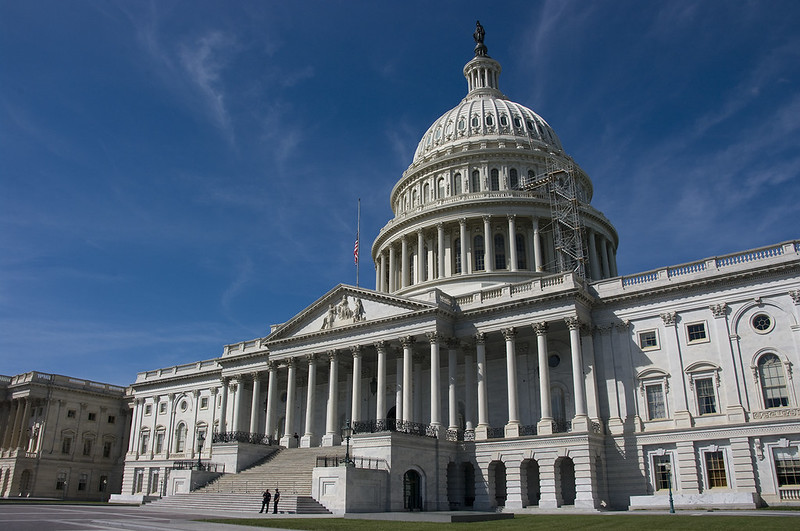 "Small Business Administration" by Mr. Blue MauMau is licensed under CC BY 2.0
"Small Business Administration" by Mr. Blue MauMau is licensed under CC BY 2.0
The Democrats’ socialist spending package includes trillions of dollars in tax hikes and new spending on superfluous government projects such as subsidies for electric bicycles and planting trees.
The bill also would expand the size and scope of the Small Business Administration (SBA). Specifically, section 100502 of the package appropriates about $2 billion to establish and run a new lending program that would provide direct loans to small businesses. New direct financing under this program runs the risk of reducing available capital from private lenders because the federal government will crowd out private competition. Increasing reliance on federal loans will also likely be met with future tax hikes on middle class Americans to fund the program. This will lead to a circular phenomenon where advocates of big government push for additional tax hikes to fund more federal spending.
Under the new program, the loan amounts can go up to as much as $150,000, or even $1 million if the borrower is small government contractor or small manufacturer. The bill also only gives the SBA three months to publish “interim final rules” that would set the underwriting criteria for the program.
It is hard to imagine how a federal bureaucracy that had a hard time processing the Paycheck Protection Program (PPP), is going to have a much easier time creating, establishing, and operating a whole new direct lending program.
Make no mistake, small businesses are the backbone of the American economy. According to the SBA, there are 32.5 million small businesses in the United States employing over 46 percent of the private workforce. Additionally, small businesses “have accounted for 62% of net new job creation since 1995.”
However, loans from the federal government have flaws. According to a report by the SBA’s Inspector General (IG), as of June 2020, the SBA approved “more than $250 million in COVID-19 economic injury loans and advance grants to potentially ineligible businesses.” The SBA also approved nearly 300 duplicate economic injury loans amounting to more than $45 million in duplicate loans. The IG’s serious concerns with fraud control protections at the SBA are warranted. The establishment of a new direct loan program is bound to be filled with fraudulent transactions and waste millions of taxpayer dollars.
Moreover, certain SBA loans have experienced significant rates of default. According to one study, from 2006-2015 the 10-year default rate was 65.6 percent for mortgage and nonmortgage loan brokers, 46.2 percent for residential property managers, and 42.8 percent for multifamily housing construction.
Clearly the SBA already has issues with its current loan programs. Taxpayer dollars could be put to better use reforming the existing programs.
While banks, credit unions, and online lenders all finance small businesses, banks continue to be the most prolific source of credit. According to a small business credit survey conducted by all twelve Federal Reserve Banks, in 2020, 42 percent of small businesses that applied for “a loan, line of credit, or cash advance” sought financing from a large bank; 43 percent sought financing from small banks; and 20 percent approached online lenders about financing opportunities. Additionally, according to the National Credit Union Administration (NCUA), since 2019 the number of commercial loans financed by credit unions increased by 12 percent and the dollar amount of commercial financed last year was “up by 22%.”
Private financing from bank and nonbank lenders is providing the necessary credit to small businesses. A new direct lending program from the SBA could increase the government’s foothold in loans and crowd out private lenders.
Instead of appropriating billions of dollars in new funding for a redundant lending program, Congress should reform the SBA’s current 7(a) program to ensure that it runs efficiently. Unnecessary spending is fiscally irresponsible and will only further contribute to the inflation crisis the United States is already facing.

